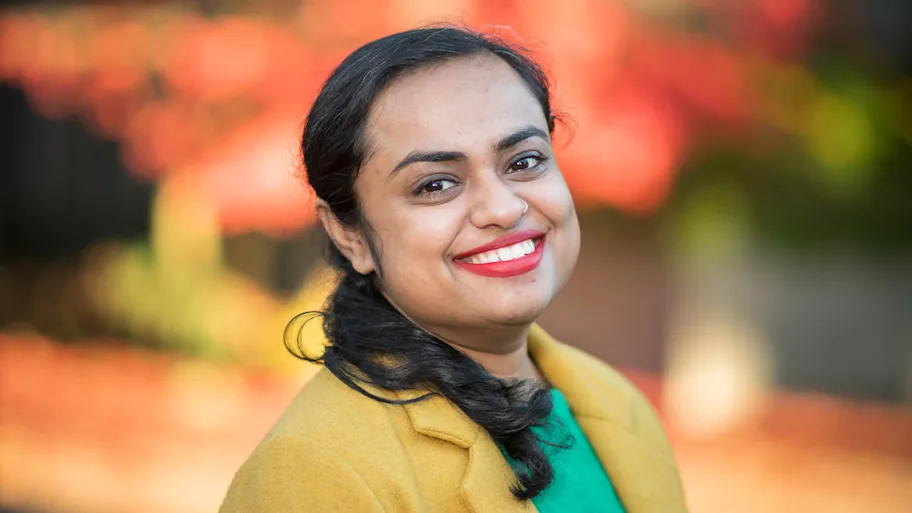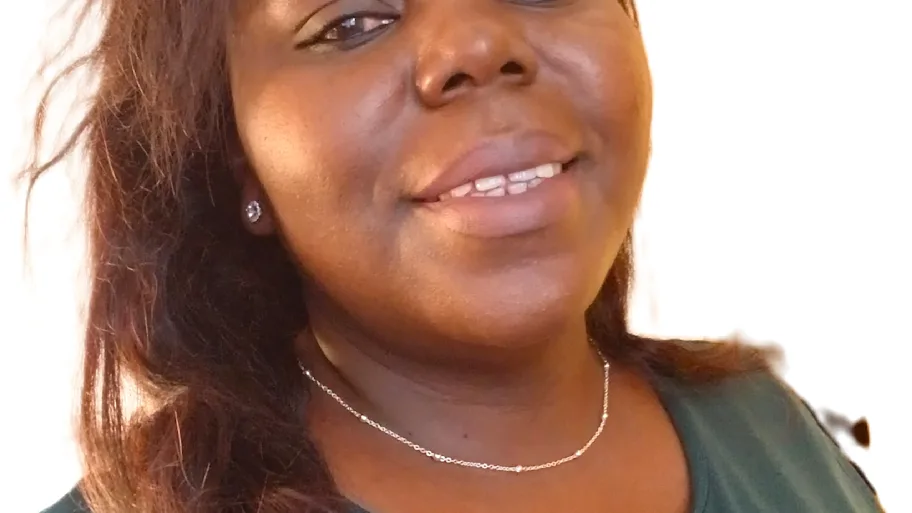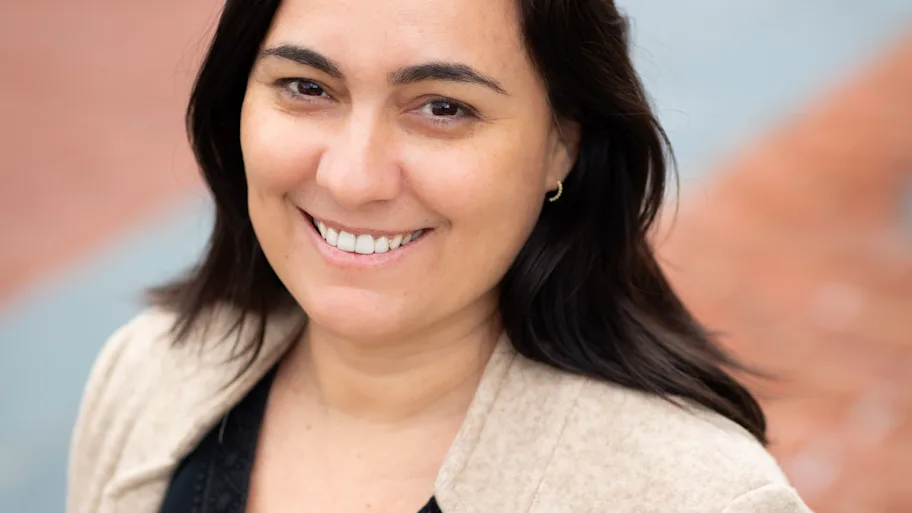
- Science news
- Frontiers news
- Mariana Fuentes - Changing the currency of conservation
Mariana Fuentes - Changing the currency of conservation
Author: Natasha Inskip

Dr Mariana Fuentes is an associate professor at Florida State University and the founder and principal investigator for the Marine Turtle Research, Ecology and Conservation Group. She also serves as the specialty chief editor of the Conservation section of Frontiers in Amphibian and Reptile Science.
She is a renowned marine conservation biologist with specialized expertise in conservation planning and natural resource management. Her extensive understanding of anthropogenic and climate change impacts on marine megafauna, particularly marine turtles, plays a vital role in her work.
Today, nearly all species of sea turtle are now officially classified as endangered, with three of the seven existing species being critically endangered (WWF).
This month’s Women in Science blog is dedicated to preserving biodiversity and looks at the role of women scientists in maintaining the world’s ecological balance. Recognized for her multifaceted approach, Mariana continues to leave a substantial impact on marine conservation, making her story the perfect one to share for International Day for Biological Diversity.
Can you please share a little bit about your journey into science and what drew you into the field that you're in?
“My interest in marine biology and conservation started at a young age. As I was finishing high school, I had the opportunity to go to a marine biology camp, which was a great experience for me being from the big, landlocked city of São Paulo. This exposure to nature and the ocean sparked my initial interest in becoming involved with marine conservation.
“At the time, however, I was still considering being a veterinarian. I wanted to be a large animal vet and my dream was to go to Africa and work on the conservation of big animals there. That changed on a trip to Zimbabwe, where I got chased by elephants. Not long after that, I visited a manta ray foraging area as part of a cruise. During the trip, I got a hickey from a manta ray. I started talking with all the folks that were there, who were mainly marine biologists, and even they admitted that this kind of thing hardly ever happens. I became really curious, so this transitionary period and these experiences helped me determine that I wanted to be a marine biologist.
“I went to Australia to do my marine biology degree. I became involved with marine turtle work early in my undergrad years by chance when I got an internship while visiting my family in Brazil at Fundação Projeto Tamar, a conservation group in Brazil with the mission of promoting the recovery of sea turtles, through research, conservation, and social inclusion actions. One thing led to another and I volunteered with marine turtle conservation groups for most of my undergraduate program.
“After that, I had the opportunity to go to Barbados and work with sea turtles and that was it. I fell in love and I never went back. For my honors project during my undergraduate program, I conducted work on the foraging ecology of green turtles that informed the management of sea turtles within their foraging area. That's when I started to see the value of research and the impact that it can have on conservation.”

How is your research being used practically in conservation efforts?
“Our work is very applied and the goal is to inform conservation and management of species of concern, mainly sea turtles. There are a few ways that we have done this. One is by better understanding the impacts that species are facing from different stressors. A lot of our work focuses on understanding anthropogenic impacts, such as climate change, habitat degradation, pollution, marine debris, and more. We look at how stressors are impacting species and with that we're able to use systematic conservation planning approaches to help prioritize stressors to focus on and conservation initiatives to implement. We want to know what stressors we should be mitigating to maximize conservation efforts. We also use spatial planning to identify areas that would benefit the most from conservation work. This has informed the design of marine protected areas, for example. It has also helped stakeholders and communities decide how to spend their resources to maximize conservation of species when resources are limited. In short, the overall idea is to help prioritize resource use to maximize the conservation of species.”
How critical is it to maintain biodiversity for the world's ecological balance and do you have any examples from your work?
“It's extremely critical. Different species have different ecological roles. If we were to remove one of those species from an ecosystem, it would have cascading effects to the whole ecosystem. Luckily, I haven't experienced that first hand, but I have experienced the impacts that declining species can have on communities. It's important to think holistically about the impacts that declines in biodiversity might have, not only to ecosystems, but also to communities. They’re all linked at the end of the day.
“For example, Indigenous communities still rely on many species for their survival and for cultural practices. When you see those resources declining, you can see the direct impacts that it has not only culturally, but also in terms of livelihoods. When thinking about conservation of species, we have to think beyond the ecological aspects to highlight the importance of conservation to other people. We have to put it into a currency that everyone can relate to.”
Can you share an exciting discovery or insight from your recent research that has implications for biodiversity preservation?
“Recently, we started deploying customized animal tracking devices on sea turtles, which are basically cameras with sensors that we put on their back. These provide us insights into their secret life. We're able to see what they see and hear what they hear for 24 hours in order to monitor and document their movements. This has provided a lot of information that we wouldn't otherwise get, especially if we're just observing a turtle from a boat or from aerial surveys.
“We're particularly interested in how sea turtles are interacting with vessels and humans and this is a great way to gather this information. The deployments provide fine scale data on the behavioral changes that animals have when experiencing human interactions. This is going to provide us insights into the non-lethal impacts of those interactions. We often think about the main impacts, being mortality or injury, but we forget that there can be implications to energetic expenditure. This can then impact the foraging ecology, which would have cascading effects to the larger ecosystems that turtles support. Ultimately, this knowledge will help better inform conservation initiatives related to sea turtles and their interactions with vessels.”

What are some of the biggest challenges you faced working in biodiversity conservation?
“My biggest challenge has been aligning the interest of researchers with the needs of stakeholders and bridging the gap between scientific outputs and practical application. I experienced this first hand while doing my PhD, I was looking at the impacts of climate change on sea turtles. I was very proud of all of my publications and I printed them out and took them to the Great Barrier Reef Marine Park Authority in Australia, where my research took place, thinking I had all the answers to their problems. They said, ‘Congratulations on all of your published work, but we can't apply this to our management plans the way it is.’ They then provided some suggestions on how it could be translated in a way that would be more applicable to the plans and considerations that they had in place. So, I went back and I tried to address some of that. What I realized was that sometimes we think we're doing applied research, but if there's not that initial engagement [with stakeholders] from the beginning of the project, or when the research is being developed, then the output might not be as applicable. It's important to have that communication and engagement from the start and develop the [research] questions with different stakeholders”
What has been your proudest achievement?
“Even though I know that a lot of my research has an impact on how managers and stakeholders are making decisions and helping sea turtles by informing their conservation, I feel the biggest contribution I’ve made is to my students. I'm always proud of my students. I love mentoring and supervising, seeing them grow as future researchers. They are expanding their knowledge base and contributing to the field, which for me feels like a huge accomplishment.”
What are your goals for the future in terms of your contributions to preserving biodiversity?
“My goal is to better understand the human dimensions of conservation. Ultimately, we manage people, so we need to better understand where different stakeholders and communities are coming from and their willingness to change their behaviors to reduce impact on species.”
Are there any women scientists that particularly inspire you? And how did they perhaps impact your decision to work in this field?
“Yes, that would be Professor Helene Marsh, who was my mentor for both of my postdoctoral fellowships in Australia. She studies dugongs in Australia and marine megafauna more broadly and has contributed greatly to conservation of different species from dugongs to dolphins to sea turtles. I know that as a woman she has had challenging moments in her career, especially when working with Indigenous communities in Australia. She mentored me while I was conducting projects with Indigenous communities and it was really rewarding learning from her and getting firsthand insights into how she dealt with some issues.”
What advice would you give to future generations of women looking to make a difference in ecology and biodiversity?
“To follow your dream and your instinct. At times, you may feel you're not achieving what you set out to achieve, but it's important to look at the smaller progress made before giving up on the bigger goal. When I think about big achievements, like making a difference to the conservation of a species, they require many smaller milestones to get there. Every little accomplishment counts.
“You might conduct some research that you think is really important, but it might take 20 years or more for you to see the fruits of that labor, especially with species that are long lived like sea turtles. Regardless of the time, every little bit helps.”
Frontiers is a signatory of the United Nations Publishers COMPACT. This interview has been published in support of the nine planetary boundaries.






